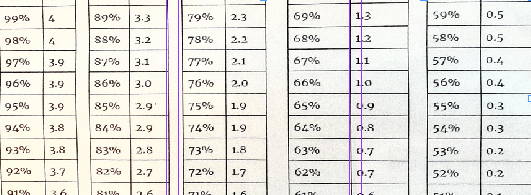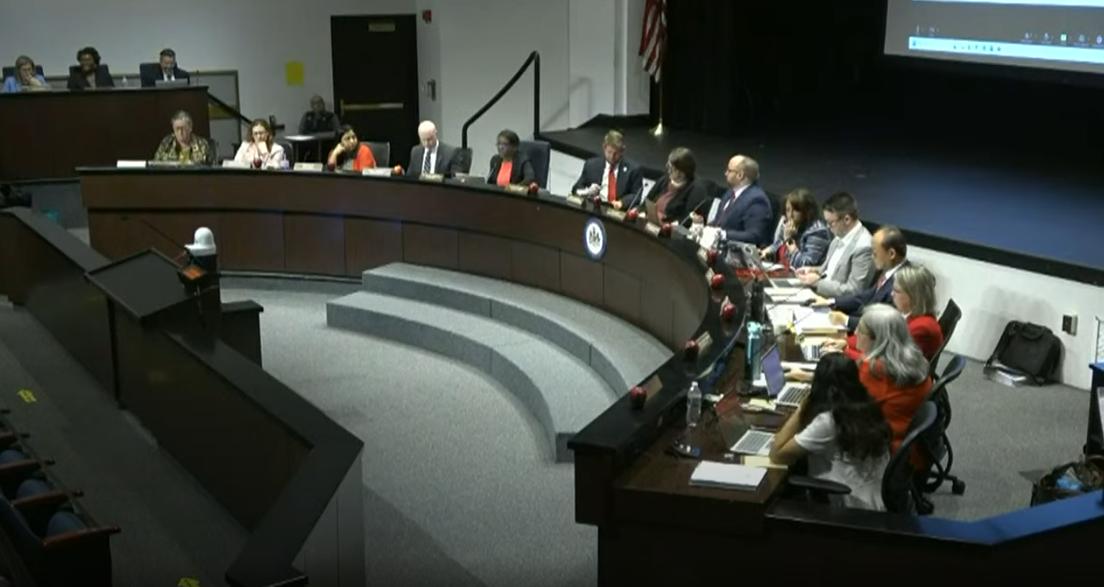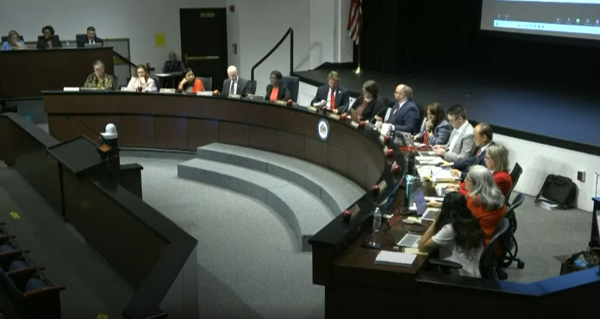4.0 Grading Scale Changes Again

At the beginning of the school year, Fairfax County Public Schools and West Po introduced a new 4.0 grading scale. The 4.0 scale was originally introduced with the possible scores of 0,1, 2, 3, and 4, a noticeable shift from the larger hundred point scale.
Then they changed it.
The 4.0 scale is a more skills-based grading scale than the 100 point scale previously used by Fairfax County. It is meant to focus more on skill by focusing more on mastery of a subject than the 100 point scale did.
Some students were confused and frustrated with the new systems.
“It’s hard to move up a grade,” senior Melanie Guerrero said. This lack of grade mobility was a central part of the frustration regarding the block 4.0 scale.
Students weren’t the only ones challenged by the new grading system. Teacher’s struggles may also have contributed to the change from the block 4.0 grading system to the 4.0 grading scale plus tenth of a point decimal system.
“I think that the change [to additional decimals] happened because teachers were struggling with the conversion with the mitigation from the old ways of grading to a standards based grading,” Mr. Colin O’Grady, AP literature and humanities teacher, said.
This struggle also resulted in problems with grading. The goal of grading is, “clarity of communication,” O’Grady said. “The whole number system only did one of 2 things, either it deflated grades by forcing teachers to hold that line and say that you can’t get the 3 or it artificially inflated grades by having teachers give kids a 3 out of an act of kindness,” O’Grady continued.
This led to the change in the grading scale close to the start of the 2nd quarter, as decimal points were added into the scoring system. Students can now earn scores like a 3.2 or a 3.3 out of 4. With this change, the 4.0 grading scale now closely resembles the original hundred point grading system, at least in the use of percentages to communicate understanding of a subject.
Some prefer the 4 point system to the 100 point scale, despite the current overwhelming similarity of the tenth of a point system. “The [100 scale] points are meaningless, ” O’Grady said. How many points should a thesis statement be worth? 10? 147?”
While the 4.0 grading scale might prescribe more meaning to its points, as it is more mastery based, it fails to show growth in the same manner because it is hard to make the jump between 2s, 3s, and 4s.
“Most teachers want the grey area because we can show students like you used to be a 1 or 2 on a scale of 1 to 10, but you’ve grown to a 6, that’s significant,” Mr. Matthew Carlock, AP European history and world history teacher said. The full-point block system made that extremely difficult.
“[It] was not specific enough,” O’Grady said. However, the 100 point scale is no more specific than the 4.0 scale because it has a large group of grades all correlating to As or Bs. It remains to be seen how the addition of decimals impacts specificity. Some students, like senior Kailey Wong believe that, “Adding the decimals doesn’t really do much.”
“There’s a large range for students to perform averagely rather than ‘exceptionally’ on a [block] 4.0 scale,” Wong continued. This new decimal adaptation allowed for more specificity and grade mobility, but it does not benefit everyone.
“If a student was getting a 4, that would have been a 3.7 or a 3.8, then I guess they’re hindered by it. But then you have the opposite for the B students. Now the B students can actually get a higher grade because we’re doing the decimal point,” Sra. Yamalie Rodríguez Figueroa, a Spanish 5, AP Spanish, and Spanish for careers teacher, said.
The added percentages do have benefits. “I think it adds more flexibility but it complicates the grading a bit more,” senior Matthew Rusten said, “because it still doesn’t align evenly with the percentages.”
This is a problem, however, the 4.0 system was never meant to align perfectly with the 100 point scale, they’re 2 different systems with different methods, so they’re never going to match together perfectly.
“The full decimal was an immediate initial way to get those adaptations to the 4 point scale for departments that hadn’t necessarily gone to rubrics… [the tenth of a point decimal system] was supposed to be a filler,” said Ms. Britton, an assistant principal.
The tenth of a point decimal system may just be a temporary measure to help students and staff adapt to grading on the 4.0 scale system. The final product may be a fully block 4.0 scale or one that includes a 3.5, but it remains unclear how long the full decimal system will remain in place, according to Britton.
This continual shift in grading scales has been especially concerning to some seniors who are sending transcripts and mid-year grades into colleges. In prior years, the 100 point system was used to calculate the grades, A through F. For reporting to colleges, those letter grades were then translated to a 4.0 system along with a difficulty bump for advanced classes which gave a grade point average (GPA). Now the 4 point grading system will be translated into the GPA. The grade bump for advanced students remains.
“The 4.0 grading scale is the one that has always been reported to colleges,” Mrs. Karen Young, College & career center specialist, said.
West Po sends a school report outlining what the school does in regards to grading with all application packages.
Katie Shiflett is trying to finish her career out strong as a senior at West Potomac. She enjoys listening to music, reading, sleeping, and playing soccer...



























































